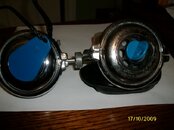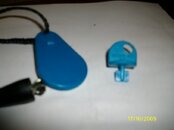Interesting question. My experience is it is just hype. I'm sort of a "throw back" I guess, but all things being equal I prefer "simple" over more "complex" designs. But there are some current balanced adjustable 2nd's out there I'd love to try....
I've taken unbalanced classic downstream 2nd's quite deep. If
properly tuned they've worked just fine. Better than fine actually

If you have a balanced 1st stage, there should be no change in IP to be concerned with.
I think the main "advantages" a balanced adjustable 2nd stage brings to the table are the ability to tune the regulator a little closer to freeflow, and more important, the ability to DE-tune the regulator in case it does freeflow a little

, and the ability to use a lighter spring. The ability to detune (strong current, etc) I think would be the biggest selling point for me.
I currently dive both balanced adjustable (Zeagle Flathead) and unbalanced classic downstream (Mares Abyss) regs.... well the Mares is slightly different from a regular classic downstream due to it's design that optimizes venturi effect... Anyway, despite the Zeagle Flathead being a fantastic reg, I seem to prefer the way the Mares breaths, and usually use the Zeagle on a stage.
Best wishes.





